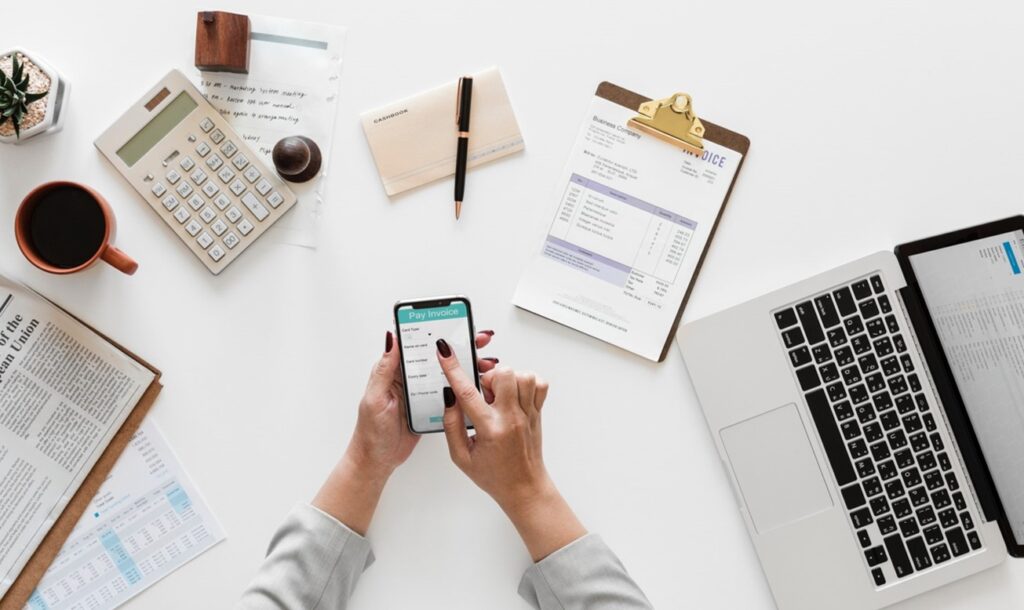
The Pros and Cons of an Online Line of Credit
When it comes to borrowing money, you don’t want to make any decisions off the cuff. Winging it can lead to problems — maybe you borrow something that doesn’t deliver the money you want on the timeline you need, or perhaps you overlook fees that increase your costs ten-fold.
You can avoid these kinds of borrowing nightmares by spending some time researching your options. If you’re thinking about using an online line of credit (or LoC for short), here’s a good primer on how this financial product works. Keep reading to learn the pros and cons of an LoC.
Benefits of an Online Line of Credit
Why do some people swear by LoCs? Here are four good reasons why an LoC might be the right fit for your finances.
-
Ideal for Unexpected Expenses

Unexpected expenses are challenging to handle. It’s hard predicting when something will go wrong in life, and even harder having the money to fall back on when these emergencies cost money.
According to MoneyKey, a line of credit may be your safety net when your savings aren’t up to snuff. You can use it when you don’t have savings in unexpected emergencies.
-
Borrow Only What You Need, When You Need & Only Pay for What You Use
A standard LoC comes with a credit limit, ranging from $500 to more than $100,000 depending on your lender and financial profile. This limit represents the maximum you can borrow at once, but it doesn’t dictate how much you have to use, nor does it reflect what you’ll pay when your first statement arrives.
That’s because your payments are based on your usage.
Let’s say you have a $2,000 limit, and you use $700 of it right away. You’ll only be charged for the $700, plus rates and fees.
Then let’s say you pay all $700 back. You won’t have to make any more payments until the next time you withdraw from your limit — whether that’s right away or months down the line.
This process sets a line of credit apart from most fixed personal loans. A fixed installment loan, for example, will come with a payment schedule breaking down the cost of your loan into several payments.
Each payment covers a fraction of your principal (the amount you borrow) and your fees. These payments won’t change, regardless of how you use your installment loan — whether you use it upfront on medication or split it up to cover several unexpected household repairs.
-
Ongoing Access to Funds

If used responsibly, your LoC gives you constant access to funds. This puts this product in opposition with the average installment loan or cash advance. These personal loans have fixed end terms, or dates when you have to repay what you owe and close your account. The only way to get more money is by applying for a new cash advance or installment loan online.
An LoC works differently because it is a revolving credit account. There is no fixed end term as long as you keep your account in good standing.
Just like a revolving door that keeps on spinning, you’ll be able to keep using your LoC on a continuous basis, provided you pay off what you use.
Every time you withdraw cash from your limit, you tie up these funds. Paying your LoC will release these funds and replenish your line of credit limit.
-
A Minimum Payment is Available
Ideally, when making payments towards your LoC, you can pay off everything to bring your balance down to zero. This means you’ll have your full limit available for another emergency down the line.
Unfortunately, real life can stand in the way of these goals. That’s why many LoC lenders let you make a minimum payment to keep your account in good standing.
This minimum payment is a fraction of your outstanding balance, either a flat fee or a percentage of your balance. Because it’s smaller than your full balance, you might find it easier to pay when you hit a rough patch.
A minimum payment can take the pressure off when you’re juggling many expenses at once. Let’s say you have to renew your license the same week you have to take your car in for repairs. You can fall back on the minimum so that you can stay on top of everything.
Disadvantages of an Online Line of Credit
No financial product is perfect for everyone across the board. Here are some of the cons that might make an LoC not right for you.
-
Fees Vary Drastically Between Lenders

One of the downsides to lines of credit is how much they might fluctuate in price. While one person might snag an LoC with an interest rate of 10%, someone else might only qualify for LoCs with a rate of 300%.
Why is there such a vast discrepancy? In many cases, it comes down to your credit score.
Legitimate lenders check your credit score to determine creditworthiness, or the probability you’ll pay them back on time. The lower your score is, the less likely a lender thinks you’ll repay what you owe.
Some financial institutions may deny you, but others may be willing to provide an LoC for bad credit. However, your bad score still suggests you’ll be a risk to the lender, so they raise their prices.
-
Carrying Over a Balance May Lower Credit Score
A minimum payment can be a lifesaver when you’re bombarded with unexpected bill after unexpected bill, but it’s not a long-term debt payment method. Depending on the terms and conditions of your LoC, it could harm your utilization ratio, which is one of the major factors involved in generating your credit score.
Your utilization ratio represents your use vs. available credit. Here’s an example:
If you charge $1,000 to a $2,000 limit, you’re using half of your LoC, which calculates to a 50% utilization ratio.
This puts you in a risky position if your lender shares this information with the major credit reporting agencies. Most financial advisors recommend keeping your ratio under 30%, with under 10% being the sweet spot.
Keeping a utilization ratio this low requires you to pay off most, if not all, your balance.
Unfortunately, a minimum payment only pays off a fraction of your balance, so it can be detrimental as a long-term practice.
-
Temptation to Overspend

One advantage can wind up being a disadvantage depending on your relationship with money. Because an LoC is available on a revolving basis, it’s always there within reach.
It’s easy to forget it’s like a financial parachute — pull it only in an emergency — so you might use it as a quick way to boost your purchasing power when you have your eye on a Black Friday deal.
Check out the New York Times tips to prevent overspending if this temptation is too hard to ignore on your own.
The Takeaway:
Borrowing money is a big decision — whether you choose a line of credit or an installment loan. With so much riding on your choice, it’s important you know your options inside and out.
This list of pros and cons is a good start to your research but doesn’t signal the end of it. If you think an LoC is a good idea, take a deeper dive to compare lenders, rates, and terms.
